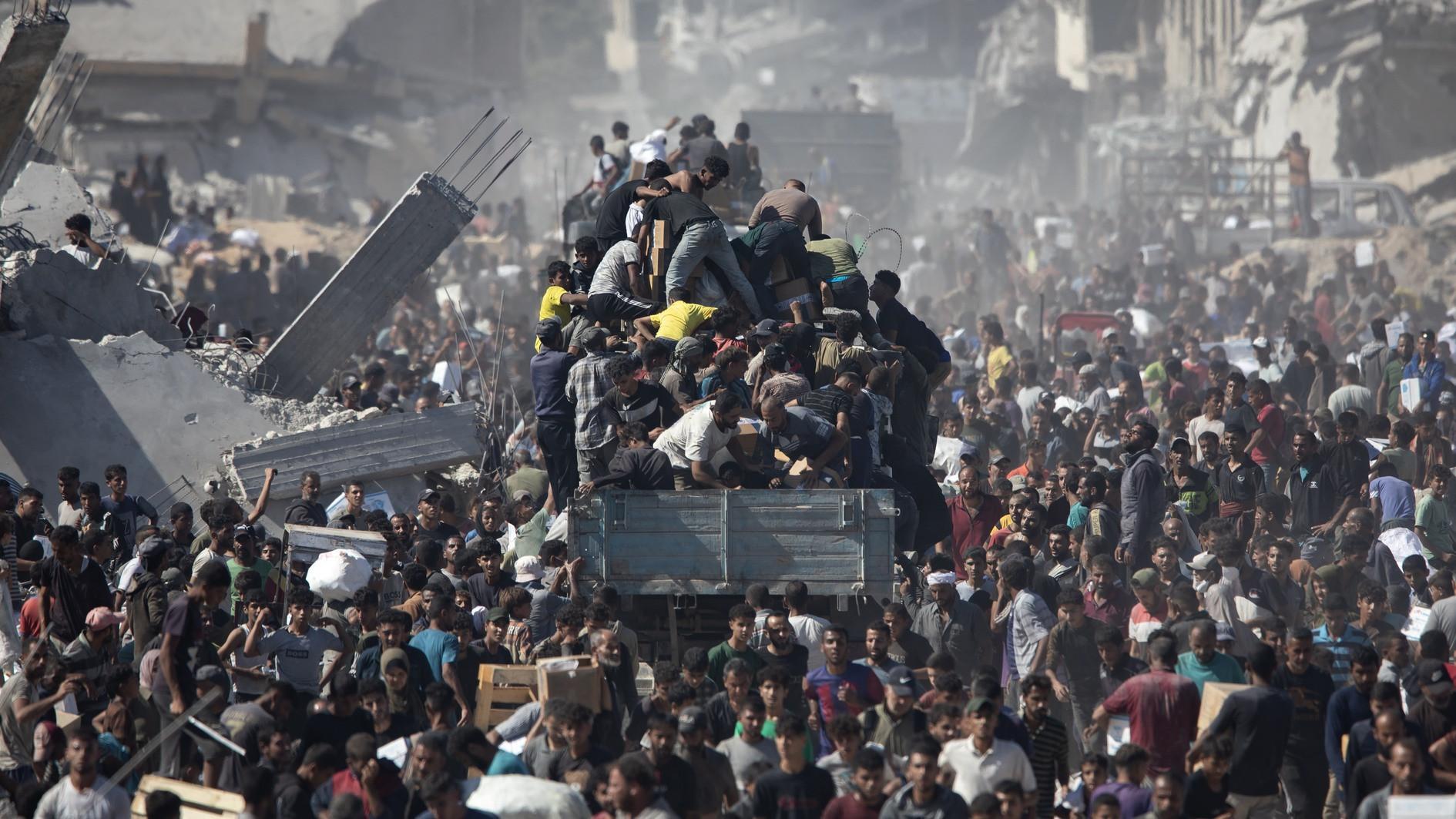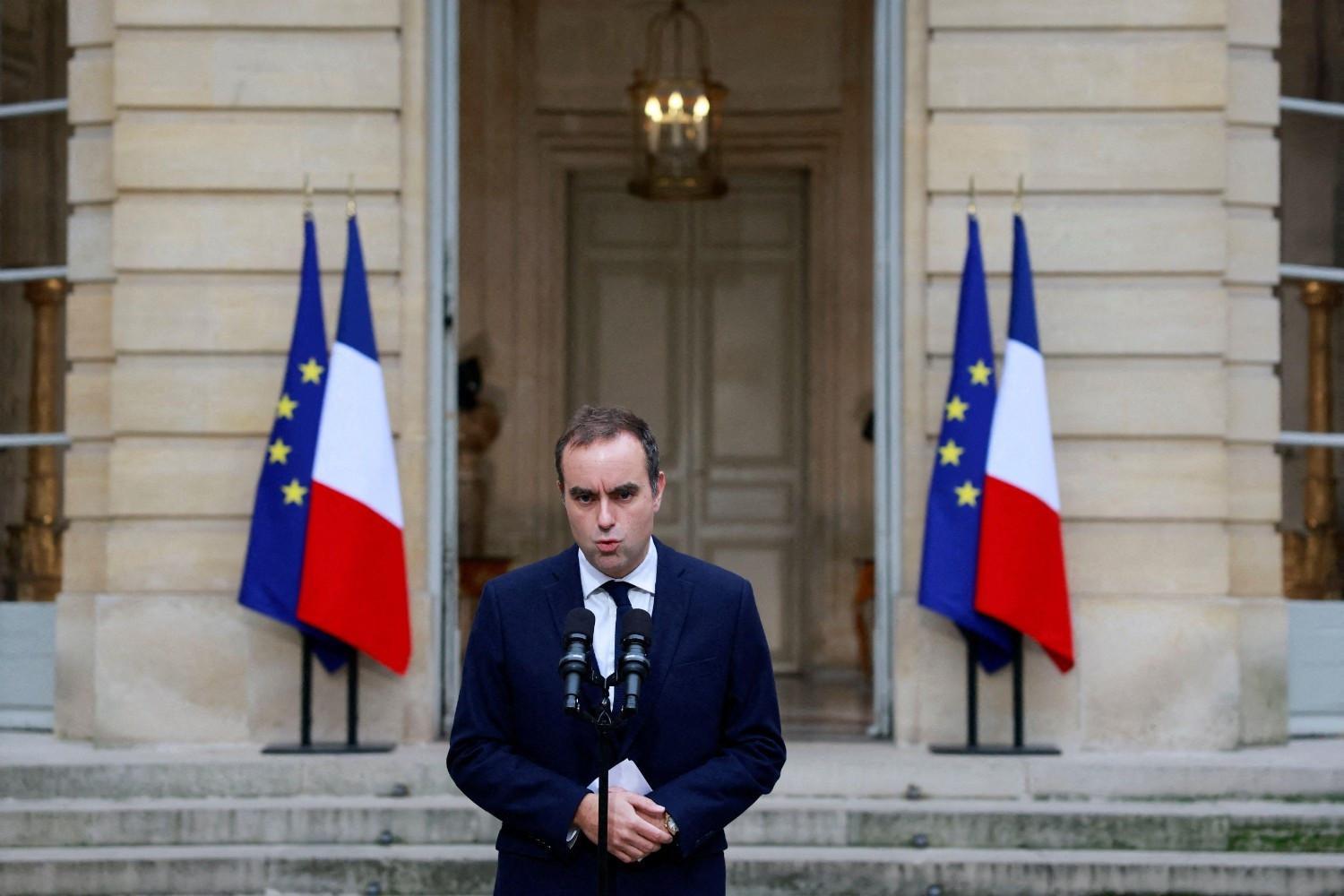Aid trucks cross into Gaza
GAZA CİTY

Trucks carrying humanitarian aid began to enter the Gaza Strip on Oct. 12 under a ceasefire agreement between Israel and Hamas, local sources said.
The sources told Anadolu that a number of aid trucks moved through the Israeli-controlled Kerem Shalom border crossing into southern Gaza.
On Gaza's borders, preparations were underway to ramp up aid entering the war-battered territory. The Israeli military body in charge of humanitarian aid in Gaza said the amount of aid entering the Palestinian territory was expected to increase on Oct. 12 to around 600 trucks per day, as stipulated in the agreement.
Egypt said it was sending 400 aid trucks into Gaza on Oct. 12. Associated Press footage showed dozens of trucks crossing the Egyptian side of the Rafah border crossing. The Egyptian Red Crescent said the vehicles carried medical supplies, tents, blankets, food and fuel. The trucks will head to the inspection area in the Kerem Shalom crossing for screening by Israeli troops.
Expanding Israeli offensives and restrictions on humanitarian aid have triggered a hunger crisis, including famine in parts of the territory.
The United Nations has said it has about 170,000 metric tons of food, medicine and other humanitarian aid ready to enter once Israel gives the green light.
Abeer Etifa, a spokeswoman for the World Food Program, said workers were clearing and repairing roads on Oct. 12 inside Gaza to make way for the deliveries.
Meanwhile, Israel said on Oct. 12 that it expected all of the living hostages held in the Gaza Strip to be released on Oct. 13, confirming the next phase of the breakthrough ceasefire deal with Hamas, as Palestinians awaited a long-promised surge of aid deliveries into the enclave.
The details emerged as the region prepared for U.S. President Donald Trump to visit Israel and Egypt — the latest in the swift flurry of developments since the ceasefire was announced last week, offering hope for an end to the two-year war.
“We are expecting all 20 of our living hostages to be released together at one time to the Red Cross and transported among six to eight vehicles,” Israeli government spokesperson Shosh Bedrosian said.
Bedrosian said the hostages will be driven to a military base to reunite with their families or, if needed, immediately to a hospital.
After the hostages are freed, Israel was ready to release about 2,000 Palestinian detainees and receive the 28 hostages believed to be dead. The military planned to hold a ceremony on their behalf in Gaza, Bedrosian added.
The dead are expected to be transferred to the Institute of Forensic Medicine for identification.
An international task force will start working to locate deceased hostages who are not returned within the 72-hour period, said Gal Hirsch, Israel’s coordinator for the Hostages and the Missing.
Officials have said the search for the bodies of hostages, some of which may be buried under rubble, could take time.
U.S. Vice President JD Vance said despite the role it played in reaching the new Gaza ceasefire deal, the U.S. has no plans to deploy American troops to Gaza or Israel.
"We're not planning to put boots on the ground," Vance told NBC in an interview that aired on Oct.12, adding that this applies to both Gaza and Israel.
"What we already have is a U.S. Central Command,” he said, referring to the US CENTCOM, which covers the Middle East.
“They are going to monitor the terms of the ceasefire ... (and) ensure that the humanitarian aid is flowing.”
Vance said that many majority-Muslim countries had offered to send troops to the region to secure Gaza and that American troops would not be needed.
Stating that he thinks the ceasefire deal brought an end to the war in Gaza, Vance added: "We are going to have to do a lot of work to make sure that it stays ended."
Gaza Humanitarian Fund's future in question
The fate of the Gaza Humanitarian Foundation, an Israeli- and U.S.-backed contractor that replaced the U.N. aid operation in May as the primary food supplier in Gaza, remained unclear.
Food-distribution sites operated by the group in the southernmost city of Rafah and central Gaza were dismantled following the ceasefire deal, several Palestinians said on Oct. 12.
The GHF had been touted by Israel and the United States as an alternative system to prevent Hamas from taking over aid. However, its operations were mired in chaos, and hundreds of Palestinians were killed by Israeli gunfire while heading to its four sites. The Israeli military has said its troops fired warning shots to control crowds.
A GHF representative said in a statement that some distribution sites might be temporarily closed during the transfer of hostages to Israel, but "there is no change to our long-term plan.”
The U.N. agency for Palestinian refugees, which has the equivalent of 6,000 trucks of aid waiting outside in Egypt and Jordan, also had no clarity on its role in the scaled-up relief effort. A spokesperson for the agency known as UNRWA, Jonathan Fowler, said the organization was “standing ready” to contribute and has enough food in its warehouses for the entire Gaza Strip population for three months.
Preparations for Trump's visit
Trump is expected to arrive on Oct. 13 morning in Israel. He will meet with families of the hostages and speak at the Knesset, Israel’s parliament, according to a schedule released by the White House.
Trump will then continue to Egypt, where the office of Egyptian President Abdel-Fattah el-Sissi has said he will co-chair a “peace summit” on Oct. 13 with regional and international leaders.
Timing has not yet been announced for the release of the Palestinian prisoners held in Israel who are to be freed under the deal. They include 250 people serving life sentences in addition to 1,700 people seized from Gaza during the war and held without charge.
Dr. Mounir al-Boursh, head of the Health Ministry in Gaza, said he hopes the bodies of medical personnel who died in Israeli detention centers will be among those handed over. He called for the release of two doctors who were detained from Gaza during the war.
Gaza residents return home
Palestinians continued to move back to areas vacated by Israeli forces on Oct. 12, although many were returning to homes reduced to rubble.
Satellite photos taken on Oct. 11 and analyzed by The Associated Press showed a line of vehicles traveling north to Gaza City along the strip’s coastline. Tents along the coast also could be seen near Gaza City’s marina, where many have been living to avoid Israeli bombardment of the city.
Armed police in Gaza City and southern Gaza patrolled the streets and secured aid trucks driving through areas from which the Israeli military had withdrawn, residents said. The police force is part of the Hamas-run Interior Ministry.
The ministry said in a statement on Oct. 12 that it would allow members of armed gangs not involved in the killing of Palestinians to turn themselves in as early as Oct. 13, “repent and be pardoned.” As for others, it noted some gangs took advantage of the situation to carry out out extrajudicial activities.
The pause in fighting allowed first responders to search previously inaccessible areas for bodies buried under rubble. Health officials said 233 bodies were recovered and brought to hospitals since Oct. 10, when the truce went into effect.
Yasser el-Bureis, who was at the morgue in Nasser Hospital in Khan Younis, said on Oct. 12 that he and his relatives had finally retrieved the bodies of his two cousins killed months earlier as they tried to flee their homes.
“For five months, we didn’t manage to recover the bodies,” he said.
Hospitals have run short on supplies for both the living and the dead, including body bags.
Devastation from 2 years of war
The war began when Hamas launched a surprise attack on southern Israel on Oct. 7, 2023, in which some 1,200 people were killed and 250 taken hostage.
In Israel’s ensuing offensive, more than 67,000 Palestinians have been killed in Gaza, according to Gaza’s Health Ministry which says around half the deaths were women and children.
The war has destroyed large swaths of Gaza and displaced about 90 percent of its 2 million residents. It has also triggered other conflicts in the region, sparked worldwide protests and led to allegations of genocide that Israel denies.
While both Israelis and Palestinians in Gaza welcomed the initial halt to the fighting and plans to release the hostages and prisoners, the longer-term fate of the ceasefire remains murky. Key questions about governance of Gaza and the post-war fate of Hamas have yet to be resolved.
Israeli Defense Minister Israel Katz said on X that he had instructed the military to prepare to begin destroying the network of tunnels built by Hamas under Gaza "through the international mechanism that will be established under the leadership and supervision of the U.S.” once the hostages are released.















